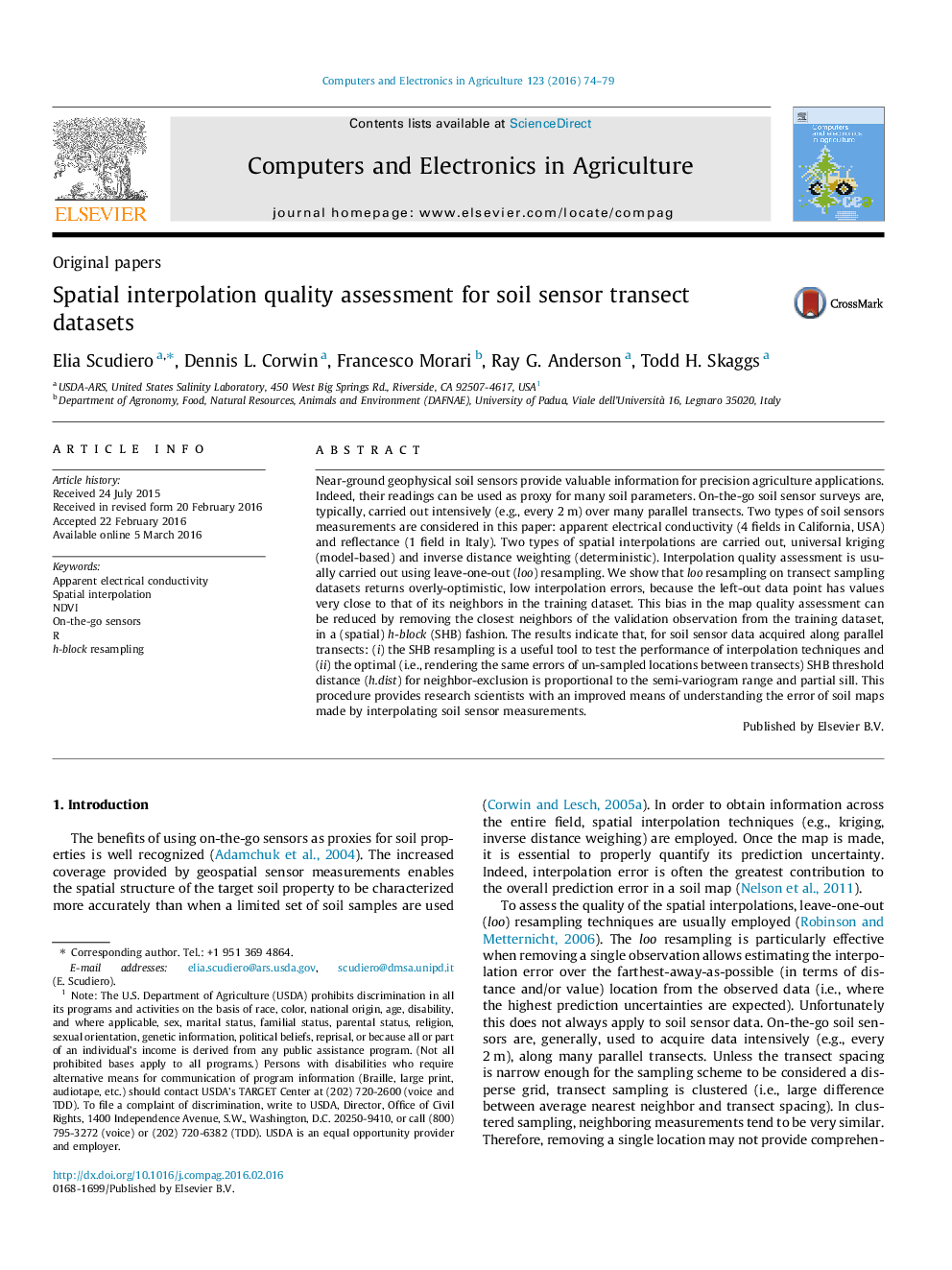| Article ID | Journal | Published Year | Pages | File Type |
|---|---|---|---|---|
| 83943 | Computers and Electronics in Agriculture | 2016 | 6 Pages |
•Near-ground soil sensing improves interpolation of soil properties.•Parallel (clustered) transect sampling is generally used on soil-sensor surveys.•Unbiased interpolation quality assessment can be achieved using h-block resampling.
Near-ground geophysical soil sensors provide valuable information for precision agriculture applications. Indeed, their readings can be used as proxy for many soil parameters. On-the-go soil sensor surveys are, typically, carried out intensively (e.g., every 2 m) over many parallel transects. Two types of soil sensors measurements are considered in this paper: apparent electrical conductivity (4 fields in California, USA) and reflectance (1 field in Italy). Two types of spatial interpolations are carried out, universal kriging (model-based) and inverse distance weighting (deterministic). Interpolation quality assessment is usually carried out using leave-one-out (loo) resampling. We show that loo resampling on transect sampling datasets returns overly-optimistic, low interpolation errors, because the left-out data point has values very close to that of its neighbors in the training dataset. This bias in the map quality assessment can be reduced by removing the closest neighbors of the validation observation from the training dataset, in a (spatial) h-block (SHB) fashion. The results indicate that, for soil sensor data acquired along parallel transects: (i) the SHB resampling is a useful tool to test the performance of interpolation techniques and (ii) the optimal (i.e., rendering the same errors of un-sampled locations between transects) SHB threshold distance (h.dist) for neighbor-exclusion is proportional to the semi-variogram range and partial sill. This procedure provides research scientists with an improved means of understanding the error of soil maps made by interpolating soil sensor measurements.
